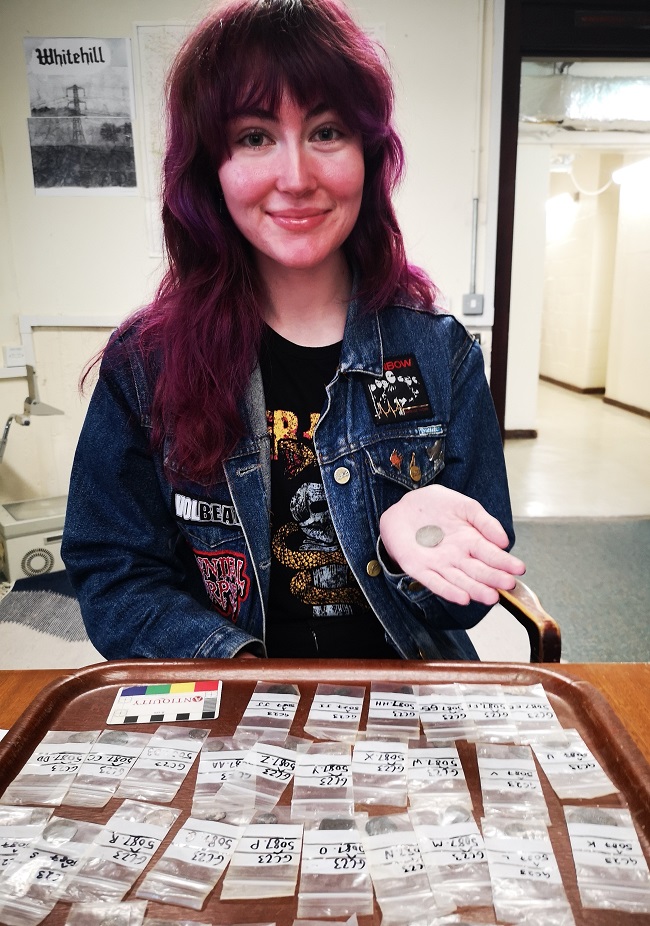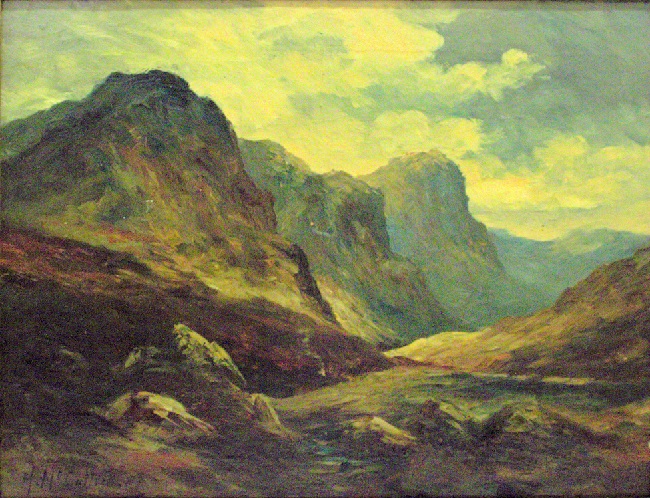Coin Hoard Provides Fascinating Glimpse into Pre-Glencoe Massacre Era
They were hidden for safekeeping underneath a stone fireplace.
But they were never retrieved until now, some 330 years later. Today archaeologists have revealed that a hoard of coins buried in a small pot, just discovered in Glencoe paints a fascinating picture of life for one Highland clan chief and his household.
The site in Glencoe was used as a “summerhouse” and traditionally associated with Alasdair Ruadh “MacIain” MacDonald of Glencoe, chief of the MacDonalds of Glencoe from 1646-1692.
The 36 coins, which vary in date, were discovered by University of Glasgow archaeology student Lucy Ankers in the grand fireplace of the Glencoe house during an archaeological dig in August 2023. The coins were found in a pot, with a small rounded pebble for a lid and hidden beneath a hearth stone stab.
However, none of the coins were minted after the 1680s which has led archaeologists to suggest that they were most likely deposited under the fireplace either just before or during the 1692 Glencoe Massacre for safekeeping. Whoever buried the coins, did not return for them which could indicate that they were among the victims of the massacre.

Lucy Ankers said: “As a first experience of a dig, Glencoe was amazing. The two weeks I spent digging solidified that I want to pursue a career within archaeology. I wasn’t expecting such an exciting find as one of my firsts, and I don’t think I will ever beat the feeling of seeing the coins peeking out of the dirt in the pot.”
The MacDonalds took part in the first Jacobite rising of 1689, this resulted in the clan being targeted in the 1692 Massacre of Glencoe. In late January 1692, two companies or approximately 120 men from the Earl of Argyll’s Regiment of Foot arrived in Glencoe from Invergarry. Their commander was Robert Campbell of Glenlyon. An estimated 38 members and associates of Clan MacDonald of Glencoe were killed on 13 February 1692, including Maclain and his wife.
Dr Michael Given, a Senior Lecturer in Archaeology and Co-Director of the University of Glasgow’s archaeological project in Glencoe, said: “These exciting finds give us a rare glimpse of a single, dramatic event. Here’s what seems an ordinary rural house, but it has a grand fireplace, impressive floor slabs, and exotic pottery imported from the Netherlands and Germany. And they’ve gathered up an amazing collection of coins in a little pot and buried them under the fireplace.
“What’s really exciting is that these coins are no later than the 1680s: so were they buried in a rush as the Massacre started first thing in the morning of the 13th February 1692? We know some of the survivors ran through the blizzard and escaped up the side glens, including this one: were these coins witnesses to this dramatic story? It’s a real privilege, as archaeologists, to hold in our hands these objects that were so much part of people’s lives in the past.”
Excavations led by the University of Glasgow indicate that the ‘summerhouse’ was a hunting lodge and feasting hall used by the MacDonald chiefs in the 17th century to entertain, host hunts and gather their people to dispense justice. Artefacts uncovered included high status pottery, evidence of leather and glass working, and the pot of silver and bronze coins.
Edward Stewart, an Archaeology PhD student and the Excavations Director of the University of Glasgow’s archaeological project in Glencoe, said: “These excavations have allowed us to better understand how landscapes such as Glencoe might have been occupied and managed through the early modern period. Our previous investigations of the nearby summer shieling settlements offered an opportunity to understand how communities of herders lived and worked in these landscapes, now the excavation of ‘MacIain’s Summerhouse’ allows us to better understand the importance of these uplands to local elites.
“The scale of this structure and the wealth of artefacts uncovered within suggest this was a place where the MacDonald chiefs could entertain with feasting, gambling, hunting and libations. The discovery of this coin hoard within the structure adds an exciting dimension to this story. However, ordinary and everyday finds within this structure such as spindle whorls for making thread, a pitch fork, and a dress pin, speak to the everyday lives of those who lived here, worked the land and minded the cattle, allowing us to tell their stories as well as these grand tales of chiefs and their retinue.”

Derek Alexander, Head of Archaeology at the National Trust for Scotland, the conservation charity who care for the Glencoe National Nature Reserve, said: “The work undertaken by Eddie and the team from the University of Glasgow in Gleann Leac-na-muidhe, and the range of artefacts recovered, in particular the discovery of the coin hoard, will make a lasting and significant contribution to our understanding of the history and archaeology of Glencoe. This exciting discovery, from another part of the dramatic landscape, adds to the work previously undertaken at the townships of Achtriachtan and Achnacon. Gradually a fuller story is being pieced together, not just about the time of the infamous Massacre, but also of everyday life in the glen before and after 1692.”
Catriona Davidson, Curator, Glencoe Folk Museum, said: “This is such an exciting moment for local heritage – finding objects like these creates such a tangible connection to the people who occupied the Glen in the past and inspires us to learn more about how they lived. It’s been our privilege to host the Archaeology Team in the Museum this year, and great to see them interacting with the local community, who appreciated the opportunity to speak to experts about the area’s rich archaeology. We loved seeing our collection through the eyes of the students; the creative ways they interpreted our objects has been impressive, and we are looking forward to sharing their resources with our visitors in the future!”
The pot, containing 36 silver and bronze coins, discovered by Lucy Ankers includes coins dating from the late 1500s through to the 1680s, including pieces from the reigns of Elizabeth I, James VI and I, Charles I, the Cromwellian Commonwealth, and Charles II. Interestingly, there were also coins from France and the Spanish Netherlands represented within the collection, as well as one coin which appears to have originated in the Papal States.
Jesper Ericsson, Curator of Numismatics, The Hunterian, University of Glasgow, said: “The contents of the jar display a fascinating mix of coinage from different eras and countries, offering an exciting opportunity to investigate how this hoard was assembled and the circumstances behind it being hidden. I’m looking forward to working with the project team to uncover what these coins and other finds can tell us about life in Glen Coe in the late 17th century.”
‘MacIain’ is known to have travelled to Rome and Paris in his youth, so some of the coins may represent personal memento of his travels. Other finds from the structure included musket and fowling shot, a gun flint and a powder measure which support the suggestion that this was used as a base for hunting. The imposing nature of the structure can be seen both in the array of imported dining wares from England, Germany and the Netherlands and the remains of what had been an impressive fireplace and grand slab floor.
The site of MacIain’s house has now been fully excavated and post-excavation analysis of the finds and environmental samples is in progress, assisted by a team of enthusiastic archaeology students.

